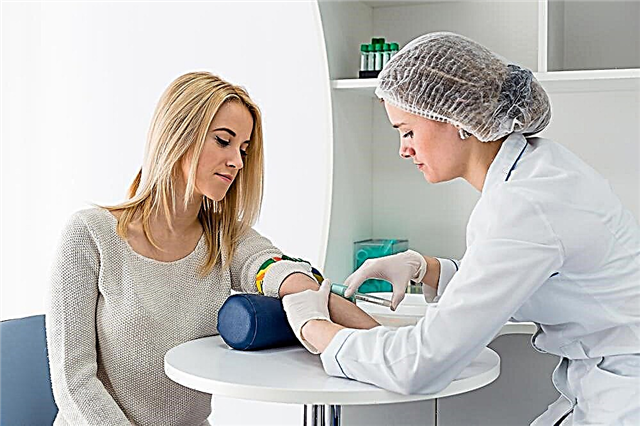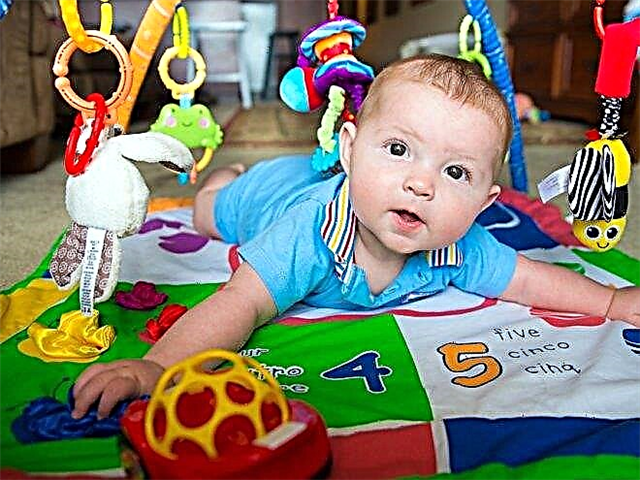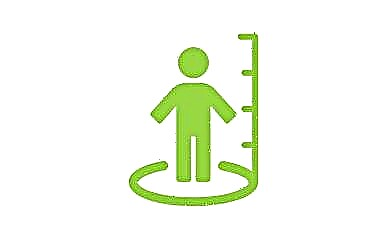
All adults love to watch how funny the kids stomp. However, upon closer observation, it becomes clear that all the crumbs stomp in different ways. Looking at the first steps of their child, parents sometimes wonder if everything is in order with his gait, whether he steps on his feet correctly.
The fears are quite understandable, because the crumbs of the legs, under the influence of new loads for themselves, can undergo pathological changes. One of them - hallux valgus - will be discussed in more detail.

What it is
Hallux valgus of children's feet is very difficult to confuse with something else. She looks too characteristic. Hallux valgus is such a deformity of the legs, in which the toes and heels are displaced to the outside, and the inner part of the foot "collapses".
If the legs are straightened at the knees and pressed tightly to one another, then the distance from one ankle to the other will be more than 4 centimeters. It clearly looks like the letter X, therefore hallux valgus is often called X-shaped.

Symptoms
In childhood, such orthopedic pathology is common. Moreover, in most cases, the valgus curvature is accompanied by a decrease in the height of the arches of the feet, that is, flat feet. Such a combined pathology is called "flat-valgus foot".
With X-shaped curvature of the feet the metatarsal joints are flattened, this leads to deformation of the forefoot, toes. Tendons and ligaments begin to work with a greater amplitude than they should be, which cannot but affect the well-being of the baby and his gait. Normally, the child's feet should be parallel to each other, the same parallelism should be seen in the first steps.
With hallux valgus, the load falls on the inner part of the foot, and not the area under the toes and heel, as provided by nature. The little fingers, thus, practically "hang" in the air, the shock absorption of the foot is impaired.

Causes of occurrence
The baby's feet can be deformed even during the intrauterine development of the fetus. The likelihood of such a pathology is influenced by the mother's metabolism, especially the gestation period.
Actually congenital pathology is rare... Much more often, orthopedists are forced to ascertain the acquired valgus curvature. To understand why such a deformation develops, it should be understood that the ligaments and tendons of babies are very weak, because in the first year of life there is no load on the lower extremities.
Closer to the year, when the baby begins to stand on his legs, the deformation becomes obvious. It is most often affected by children with weakened muscles, overweight babies. Heavy stress on weak legs can lead to an X-shaped deformation.


Often, after a year, pathology is found in children who were born prematurely, with low weight, in babies weakened by frequent diseases of infectious and non-infectious origin, as well as in children with congenital weakness of connective tissue.
The development of acquired hallux valgus can be influenced by a disease such as rickets. With it, the mineral metabolism in bone tissue is disrupted, which creates the prerequisites for the development of various disorders of the musculoskeletal system. Quite often, valgus-type deformity develops in children suffering from infantile cerebral palsy and other ailments with neuromuscular symptoms.
Much less often, pathology can arise as a consequence of an injury associated with rupture of tendons, muscles, fractures of the foot, lower leg, in which the child was forced to spend a long period of time in a cast.
Doctors with regret state that often the cause of the disease lies in parenting errors... Sometimes mom and dad want to see their child as adults so much that they put him on his feet too early. Walkers and jumpers, in which a child is placed up to the age of 9-10 months, other verticalizing devices, unfortunately, only contribute to the incorrect position of the feet and an excessive load on the spine.
After the baby has begun to walk, the risk of developing hallux valgus remains if the baby takes its first steps in improperly selected uncomfortable shoes. An example of such shoes is booties. They do not fix the foot, they are too soft, and the baby's foot at first needs additional fixation and support.
Whatever the reason, the processes are approximately the same - the ankle will mix inward, "pushing" the outer part of the foot, toes and heel, forcing them to take a pivot position towards the outside.


Congenital hallux valgus becomes visible with the naked eye in the first months of a child's life. The foot is bent unnaturally inward.
Parents usually face the fact of the acquired X-shaped foot when the child turns a year or a half. By this age, babies begin to walk, and some of the signs can be seen without even being an orthopedic doctor:
- the child learns to walk slowly and with difficulty;
- when taking steps, the baby rests on the inner edge of the feet;
- the baby gets tired quickly, cannot keep upright for a long time.

Over time, the feet take on a characteristic look, reminiscent of the letter X, the child's gait is clumsy, uncertain, shuffling. The kid quickly gets tired, cannot play for a long time, it is difficult for him to move and active games. There are aching pains in the legs and spine; in the evenings, parents may notice a slight swelling of the lower extremities.


A child with an X-shaped curvature of the feet cannot run like his peers. It is jogging that is most difficult for him, parents can pay attention to the fact that when trying to run, the baby is swinging his arms strongly, trying to maintain balance.
Shoes are worn out in those places that bear the main load during walking, usually the inside of the boots and sandals is washed.

Types and degrees
Hallux valgus in different children can have significant differences. So, there are several main types of this pathology:
- Static deformation. It begins in children with postural curvature and is a compensatory consequence of spinal problems.
- Structural deformation. This X-shaped curvature is congenital. With it, the talus is located anatomically incorrectly.
- Spastic deformity. This is a curvature of the position of the feet associated with neuromuscular diseases, cerebral palsy.
- Rachitic deformity. Curvature that came after the transferred rickets.
- Traumatic deformity. Pathology that occurred after injuries, fractures, tendon and muscle tissue ruptures.

Much in the correction and prognosis depends on the degree of pathology. To visualize the criteria for assessing degrees, the child should be placed straight, legs straightened at the knees.
Normally, two parallel straight lines can be drawn from the hip to the heel along the back of the legs. With hallux valgus, the lines will be refracted around the ankle joint. The angle of refraction will determine the severity of the pathology:
- 1 degree. The angle of deviation of the line from the straight parallel is 10-15 degrees. This stage lends itself well to correction.
- 2nd degree. The deflection angle is 15-20 degrees. Deformity will require a longer course of treatment.
- 3 degree. The deflection angle is 20-30 degrees. The treatment will be laborious and lengthy.
- 4 degree. The deflection angle is above 30 degrees. Surgical intervention is advisable.

Diagnostics
If parents have noticed that the feet of the crumbs are "mowing" inward, you should definitely visit an orthopedic surgeon who can confirm or deny the fears of mom and dad. But even if nothing in the baby's gait worries the parents, then the pathology can be detected by an orthopedic surgeon during a routine medical examination or on the passage of the commission when registering a child in a nursery.

A visual examination by a specialist alone is not enough to establish such a diagnosis. A special examination is required. It includes:
- radiographic images of feet in three projections;
- computer plantography;
- podometry;
- ultrasound examination of the joints;
- visiting a neurologist.
Only on the basis of the images obtained and the study of the morphological properties of the foot and the distribution of the load when walking, the orthopedic surgeon will be able to make a final conclusion about the presence of valgus curvature, its type and degree, after which the appropriate treatment will be prescribed.
Treatment
Treatment is aimed at strengthening the muscles and ligaments, and being able to take on the vertical load. Only this will allow you to return the foot to its normal position.
If a baby has a congenital hallux valgus, then he may be given plaster cast on both legs, fixing the feet in the correct position... This is done by an orthopedic surgeon, who, when applying a bandage, will take into account all the features of the pathology in a particular child.
Further treatment will be one-to-one repeat therapy, which is prescribed in cases of acquired hallux valgus. Treatment of acquired deformity can be different depending on the degree of the disease. Mild pathologies do not require surgical intervention, conservative measures are quite enough.
True, parents must prepare for daily systematic work to correct the position of the child's legs.

Foot baths
It is recommended to do them daily before bedtime. The child's feet are kept in warm water with decoctions chamomile, as well as burdock root. You can add a little regular baking soda to the water. The purpose of such procedures is to relax the lower limbs and improve blood circulation.
Baths are also done after massage sessions, but in this case, the procedure should be contrasting. First, the child takes a warm bath, and then cold water is gradually added to it.

Massage
Massage for hallux valgus is very similar to massage for flat feet - it uses the same techniques - rubbing, kneading, vibration. The massage begins with the feet, carefully kneading the toes, the metatarsal area, the lateral parts of the foot, moving to the ankle and knee joint, and then rising higher.
With hallux valgus, it is important to massage not only the legs, but also the lumbosacral region. Massage is prescribed in courses of 10-14 days with a break of 10 days. You can do it with a professional massage therapist, or you can do it yourself at home, since there is nothing difficult in such manipulation.

Daily massage sessions are useful pad applicator... An orthopedic surgeon will help you choose it. For medicinal purposes, mats made of dense and rigid materials, with high embossed patterns or needle applicators are usually preferred, while prevention mats can be softer and more pleasant.
You should engage in at least 20 minutes a day, performing a set of exercises from a standing position. It includes the usual walking barefoot on the applicator, walking on toes and heels, on the outside and inside of the foot, jumping, rolling from heel to toe.

Paraffin therapy
In the treatment of hallux valgus, a procedure such as paraffin boots has proven itself especially well. A special type of paraffin is used for the legs, which is free from impurities. It retains heat for a long time and effectively warms up the lower extremities, improving blood circulation in the feet and all muscle groups.
Such procedures can be done in the clinic, or you can master the technique of creating boots on your own, especially since the paraffin used in medical practice is readily available in pharmacies.
The heated elastic material is applied to the feet, covered with polyethylene and left for 15-20 minutes.

Mud applications
For this treatment, a special mud is used with healing properties. In fact, it is fatty silt that accumulates at the bottom of salt lakes and estuaries. Such procedures are carried out under the supervision of a physician.
Usually, mud is applied to the child's legs every other day during the course of therapy, which usually lasts from 10 to 20 days.

Physiotherapy
Of the physiotherapeutic methods for correcting valgus curvature, the most common are electrophoresis, magnetotherapy and electrical stimulation of the muscles of the lower extremities. All these procedures can be done on the referral of an orthopedic surgeon at the local polyclinic.
During the course of treatment, which can last for years, physiotherapy procedures will be prescribed several times.

Sport
Children with hallux valgus are not recommended to run, jump, or play football. Hockey and figure skating are contraindicated. Any sport in which the loads on the legs are great is prohibited, at least until the moment of recovery. But this does not mean that a child with such an orthopedic pathology cannot play sports.
With valgus curvature is useful swimming, synchronized swimming, cycling. If the child's age allows, after such a diagnosis has been made, it must be recorded in the pool.
And it's not about Olympic hopes, just swimming will contribute to a faster correction of the pathology, since this will involve all muscle groups of the legs without gravitational load, in the water.


Orthopedic shoes
The question of wearing special orthopedic shoes is decided by the attending physician. Usually, heavy and expensive shoe pairs from an orthopedic salon have to be sewn according to individual measurements for parents of children 2-3 degrees of hallux valgus.
This shoe differs from the usual one primarily in that it was created already taking into account the angle of deviation of the position of the baby's feet from the norm. Recommendations to manufacturers are written by the attending orthopedic doctor.
When walking in such boots, the child's leg is in the correct position. Gradually, the load begins to be distributed correctly, the pathology disappears completely or significantly decreases.

Surgical intervention
A few decades ago, surgery for X-shaped feet in a child was considered the only way to solve the problem. Now medicine looks at the surgical treatment of pathology differently - only 6-7% of children with an established and confirmed diagnosis of grade 3-4 hallux valgus are shown such treatment.
The doctor can also suggest an operation if all the above-described methods of conservative therapy did not give the desired result.
Most often, surgeons use method of transplanting a tendon from the peroneal muscle to the inner part of the feet, thereby strengthening and strengthening them. In parallel with this, surgeons lengthen the Achilles tendon. Special splints and fixation devices can be applied to the feet by surgeons. After the operation and the end of the recovery period, a course of physiotherapy, therapeutic exercises, massage is shown.

Forecasts
A small degree of hallux valgus revealed at an early age lends itself well to correction, it is possible to restore the functions of the feet completely.
With regard to congenital forms of curvature of the feet, the forecasts are not so rosy, even after a surgical operation it is not always possible to give the feet a completely normal position.
Severe deformities in the absence of timely treatment can make a child disabled in several years, because all joints, especially the knee and hip, are gradually drawn into the destructive process, and the spine suffers.

Prevention
Parents can prevent the development of acquired pathology by observing the principles of rationality when placing the child on his feet. Until 8-9 months, this is not recommended in principle. It is advisable that the child mastered sitting and crawling before walking, then his spine and muscular system can better prepare for an upright position.
At an early age, you should practice prevention of rickets, not allowing the child's body to begin to experience vitamin D deficiency. The child should have a sufficient number of walks in the fresh air, a balanced diet.
When the baby starts to walk you need to choose the right shoes for him, make sure that it is the size of the baby, does not sting or dangle on the leg, has a small heel, and is not too soft.
Up to 3 years old, it is advisable for children to buy shoe pairs with a hard back and good fixation of the ankle. It is imperative to encourage walking barefoot around the house, on grass, sand, ground, if possible.
You can buy a prophylactic foot massage mat for your child.


For more information on the danger of hallux valgus in a child, see the next video.



